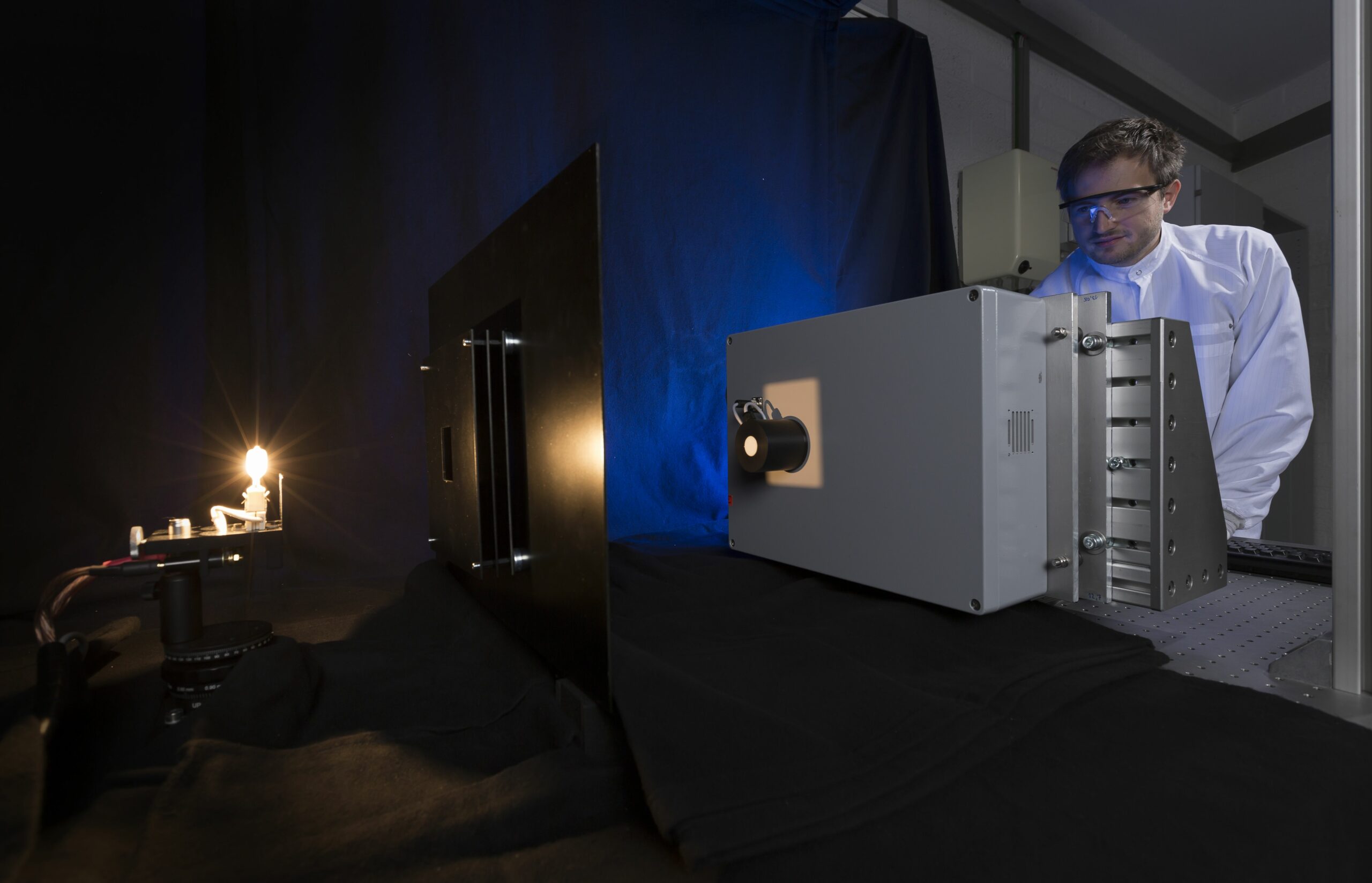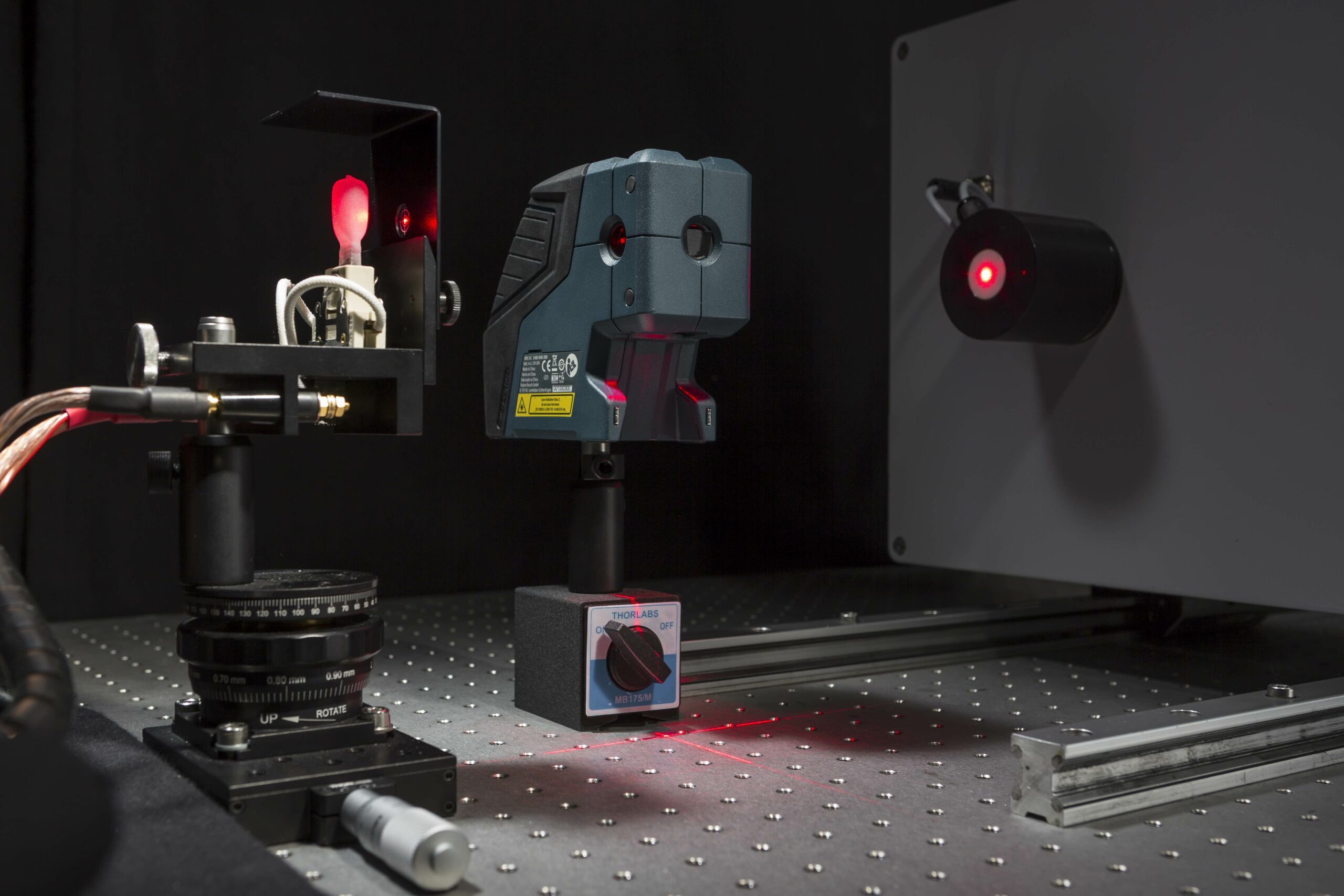ISFH CalTeC – reference lamps
Contact
Dr. Karsten Bothe
Tel.: +49(0)5151-999 425
E-Mail: sensors@caltec.isfh.de
Adjustment of reference lamp and spectroradiometer by means of a bidirectional laser

Calibration of a reference lamp using a baffle stack to block stray light
Calibration of reference lamps
The ISFH CalTeC (Calibration and Test Center) is accredited by the German Accreditation Body (DAkkS) under the registration number D-K-18657-01-00 for the calibration of reference lamps with respect to their spectral irradiance. The DAkkS accreditation confirms that the ISFH CalTeC fulfils all requirements of DIN EN ISO/IEC 17025 for the operation of calibration and test laboratories. All measured values are provided with their respective uncertainty and are traceable to transfer standards calibrated by Germany’s national metrology institute, the Physikalisch Technische Bundesanstalt (PTB).
Calibrated spectroradiometers are necessary for the precise measurement of the irradiance of light sources. Light sources with a continuous spectrum covering the entire spectral measuring range of the measuring instruments are often used for the calibration of these measuring instruments. Tungsten halogen lamps are suitable for this purpose because they have a high long-term stability after an appropriate burn-in procedure. The ISFH CalTeC uses a substitution procedure to calibrate such 250 W tungsten halogen lamps. For this purpose, the lamp to be calibrated is positioned at a distance of 300 mm from the measuring head of a spectroradiometer. The distance is adjusted with an inside micrometer gauge between the input optics (diffuser) of the spectroradiometer and the reference plane of the light source to be calibrated. Using a bidirectional laser, we ensure that the measuring head and the filament of the halogen lamp are located on one optical axis perpendicular to the entrance plane of the spectroradiometer measuring head. In order to be able to provide data with low uncertainty for the irradiance of the halogen lamp, we have thoroughly characterized the spectroradiometer, minimized the impact of stray light, quantified the measurement uncertainty contributions and defined an optimal measurement procedure based on this analysis.

